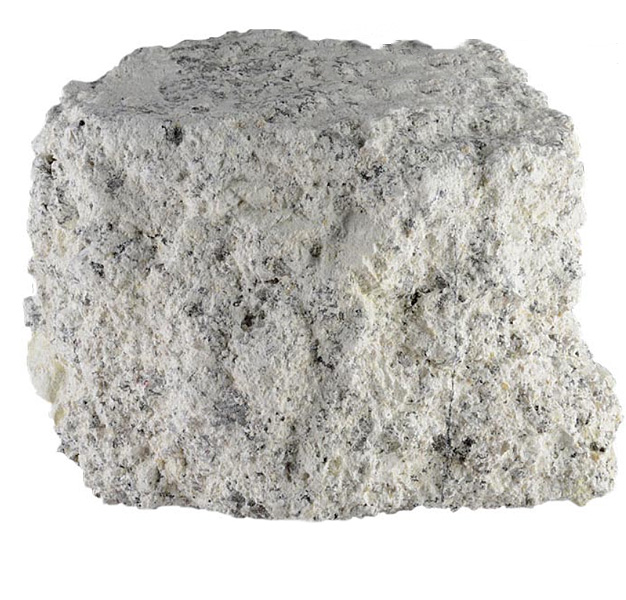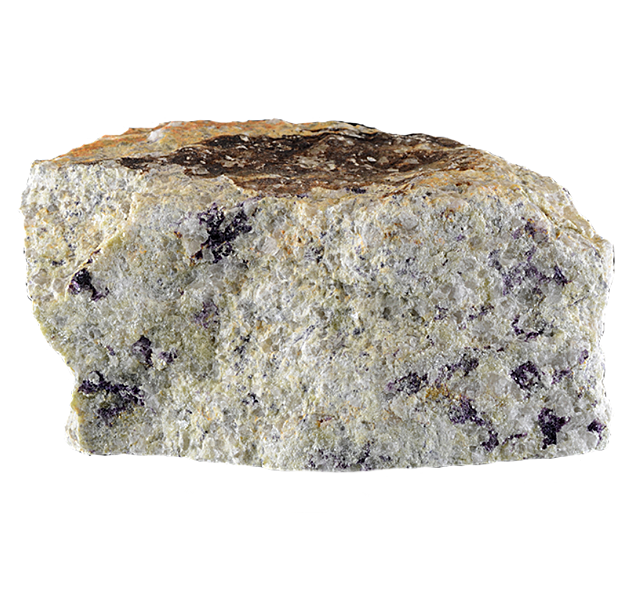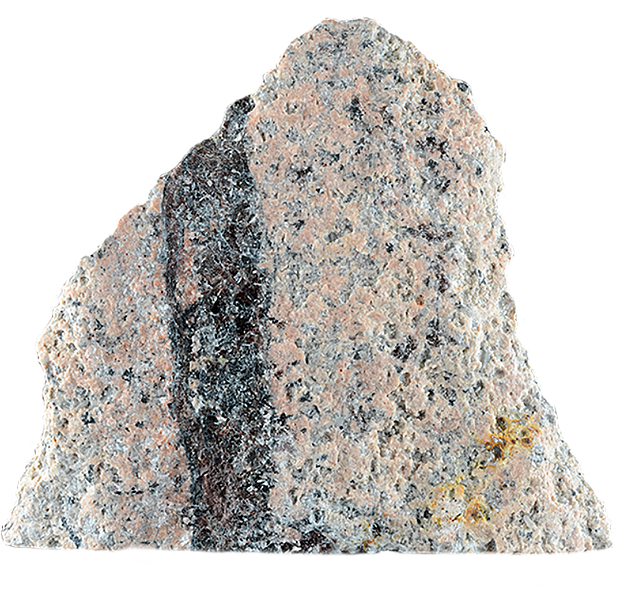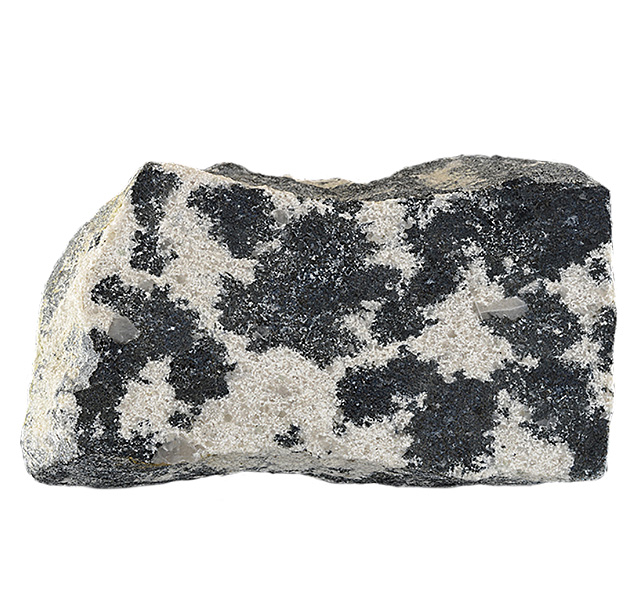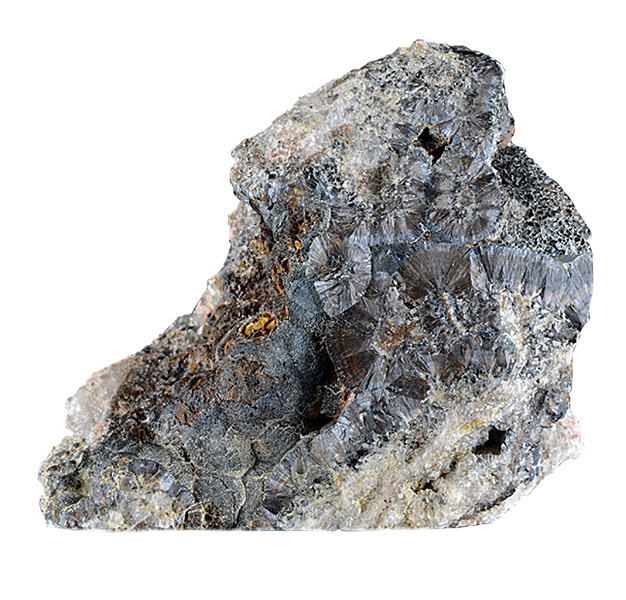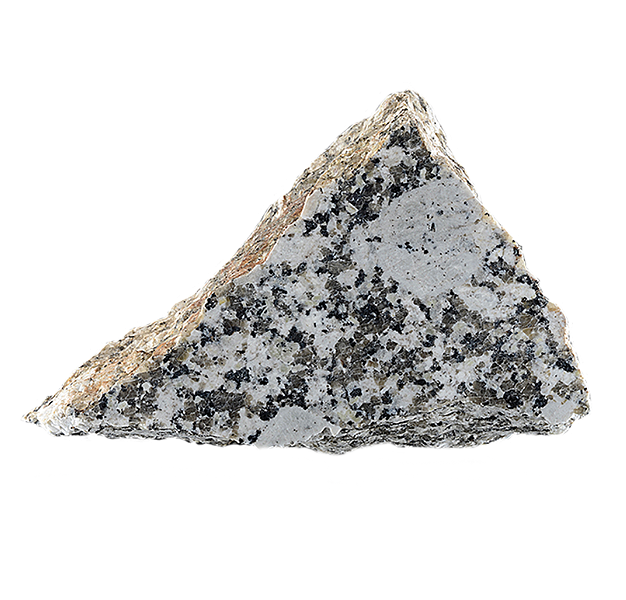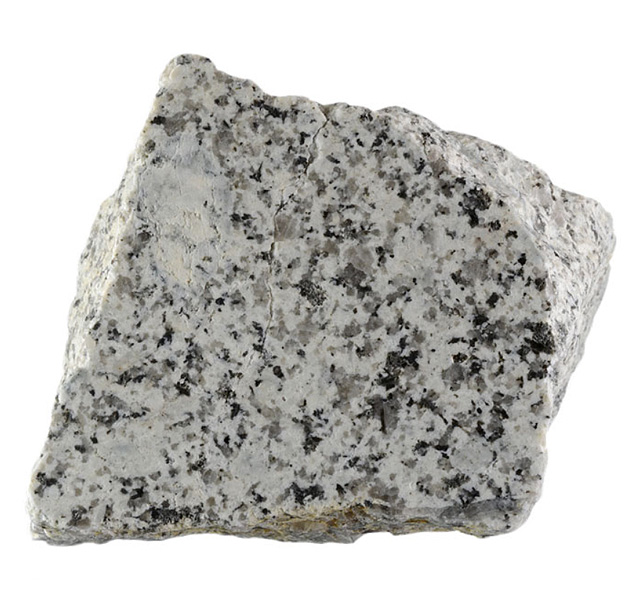
Fact sheet
This sample of tourmaline granite has been extemsively altered by hyrothermal processes. The feldspar has been kaolinised and considerable fluorite is now present. It is because of this later alteration that this part of the St Austell complex is an active china clay pit. Look at the hand specimen photographs to see orthoclase being altered to kaolinite. See if you can identify this alteration in the thin section.
A case study of the St Austell granite complex in Cornwall, England, illustrating the range of rocks associated with a granite intrusion. The earliest part of the complex is a siderophyllite (biotite) granite containing muscovite and tourmaline typical of a SW England granite, with many primary magmatic features.
This early intrusion was followed by the intrusion of an evolved volatile-rich magma which was the driving force behind a series of intense hydrothermal processes as volatiles escaped from this magma and helped to establish an extensive alteration halo (aureole). Boron, fluorine and lithium (as well as water) played major roles in the formation of the second intrusion and in the associated hydrothermal processes. Igneous activity lasted around 18 million years from 282 Ma (siderophyllite granite) to 265 Ma (fluorite granite).

